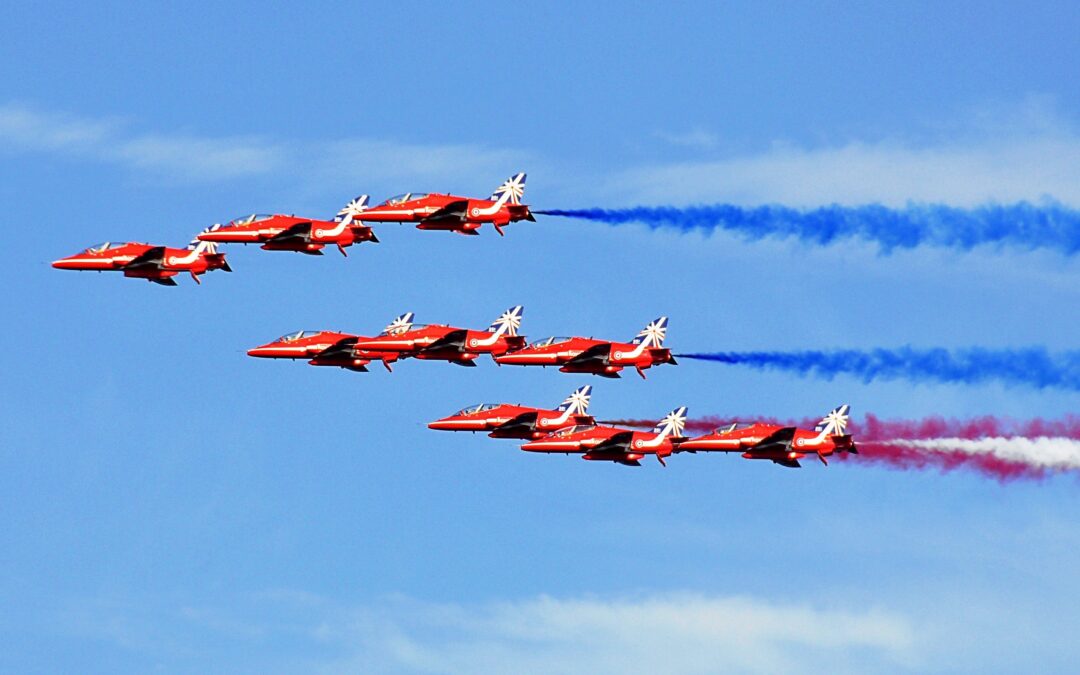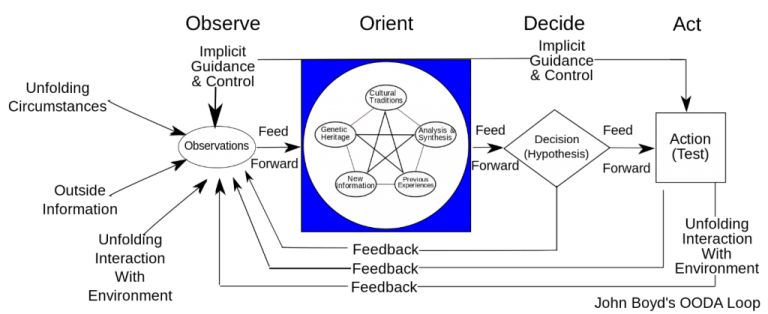Small business owners have to make quick decisions every day. So do fighter pilots, who have to react fast in the face of many uncertainties to stay alive. They have to assess their opponent’s skill and training, the qualities of the aircraft and their own attributes whilst dealing with a plethora of uncertainties. John Boyd of the U.S. Air Force developed a mental model to help in these situations which has parallels in the business world.
It’s called OODA – Observe, Orient, Decide, Act. It’s a loop, so go through it repeatedly until the conflict is resolved. It’s designed to close the opponent off so they make poor decisions from which you can benefit. For opponent, read competitor.
Observe
Consider what is immediately affecting me, and what is affecting my opponent or others in my market space? What could affect us later on? Can I make any predictions now and how accurate were my previous ones (remember this is a continuous loop). Keep an awareness of the context and meaning of the information. Separate the relevant from the irrelevant.
Orient
This stage is easily skipped, but don’t. This is where you recognise the barriers that might interfere with other parts of the process. This is about connecting with reality, not a false version viewed through the lens of your cognitive biases.
This step allows you to find a start point to outsmart your opponent even if you are at a competitive disadvantage at the outset. This is about analysing, which means breaking down the elements of the situation, and then synthesising – putting them back together in a different way which gains you an advantage. Boyd’s analogy was of a snowmobile. Something with caterpillar tracks from a tank, an outboard motor, handlebars from a bike, and skis to enable it to quickly move on snow. Can you create your own snowmobile?
Decide
Next, make an informed decision from the ideas generated above. Be careful not to make the same decision time after time.
Most of the struggles to make a breakthrough in business come from the predictability of using the same criteria that everybody, including your competitors, is aware of. At best you make incremental gains but no real breakthroughs.
This part of the loop needs flexibility. The way to get that is to test your decisions through thought experiments, spotting flaws and incorporating the defects into the loop at the Observe stage.
Act
This is the real test stage – the real world, where you decide whether you observed the right information, used the right mental models, were not influenced by biases and other barriers and can change your earlier hypothesis. Whatever the outcome you cycle back to the observe stage.
Why this works
Speed
Like fighter pilots, you can cycle through this very quickly improving your model all the time. It gives you the ability to react faster in a competitive environment. It’s why small businesses have an advantage over large ones and why a lot of big businesses are adopting small-business techniques such as agile to develop competitive advantage.
Comfort with uncertainty
Uncertainty does not have to equate to risk. You have gaps in your knowledge, you cannot read the minds of your competitors or customers but you can observe and draw conclusions from what they are doing and how they are going about it. You can, and should, ask your customers . Do not worry about where they are, but think about where they are going. Fighter pilots cannot concentrate on opponent’s position and their speed at the same time. If you concentrate too hard on where your customers or competitors are you will lose sight of where they are going so you cannot intercept. If you can move faster than your competitors, you will seem to be unpredictable to them and that closes off their loop and causes confusion which you can exploit.
“Let your plans be dark and impenetrable as night, and when you move, fall like a thunderbolt”. Sun Tzu, the Art of War

